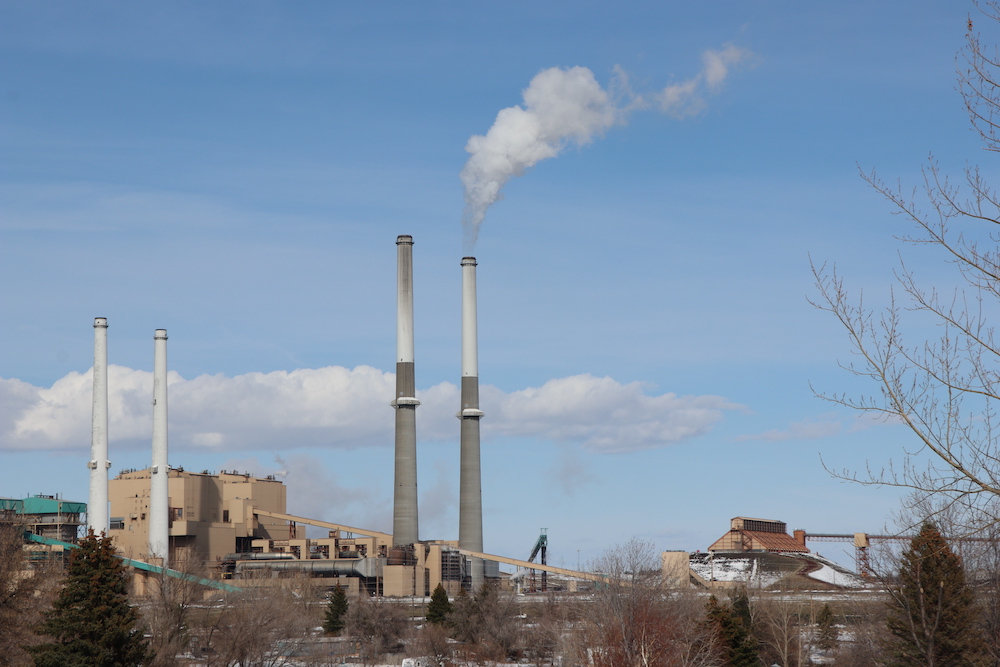
- Details
- By Kelsey Turner
COLSTRIP, Montana—After a 10-hour shift at the coal-fired power plant in the small southeastern Montana town of Colstrip, Northern Cheyenne tribal member Jason Small drives three minutes down the road to a local taco truck. Dressed in a zip-up hoodie and jeans, he grabs a burrito and heads next door for a late-afternoon beer at the Whiskey Gulch Saloon, a nearly empty bar where the staff all know him.
Small has worked at the Colstrip Steam Electric Station for about 20 years. He’s a boilermaker, doing maintenance and repairs for the plant’s two remaining coal-fired generating units, which are capable of producing up to 1,480 megawatts of electricity. The other two units shut down in 2020 – two years ahead of schedule – because their owners, Talen Montana and Puget Sound Energy, could not cover their costs.
Colstrip has provided power to cities across the Northwest since the 1970s. Now, as state environmental regulations in Washington and Oregon require four of the plant’s six owners based in these states to pull out of coal-fired power by 2025 and 2030, respectively, the plant’s future is uncertain. “You don’t know if this thing is shutting down in two weeks or tomorrow morning or five years from now or 2040,” Small said.
The plant’s closure would mean job losses for locals, including Small. But unemployment is not the only legacy the plant would leave behind: Questions remain about how five decades-worth of coal ash – the toxic byproduct that contains dangerous elements like arsenic, lead and mercury – will be cleaned up.
Coal ash presents a serious environmental challenge, as well as threats to the spiritual and cultural history of Native Americans on the 690-square-mile Northern Cheyenne Indian Reservation where Small lives among 5,000 other tribal members. Though he has worked at various power plants around the country, Small prefers living close to home, on the land his ancestors fought their way back to after the U.S. government forcibly relocated them to present-day Oklahoma in the 1800s.
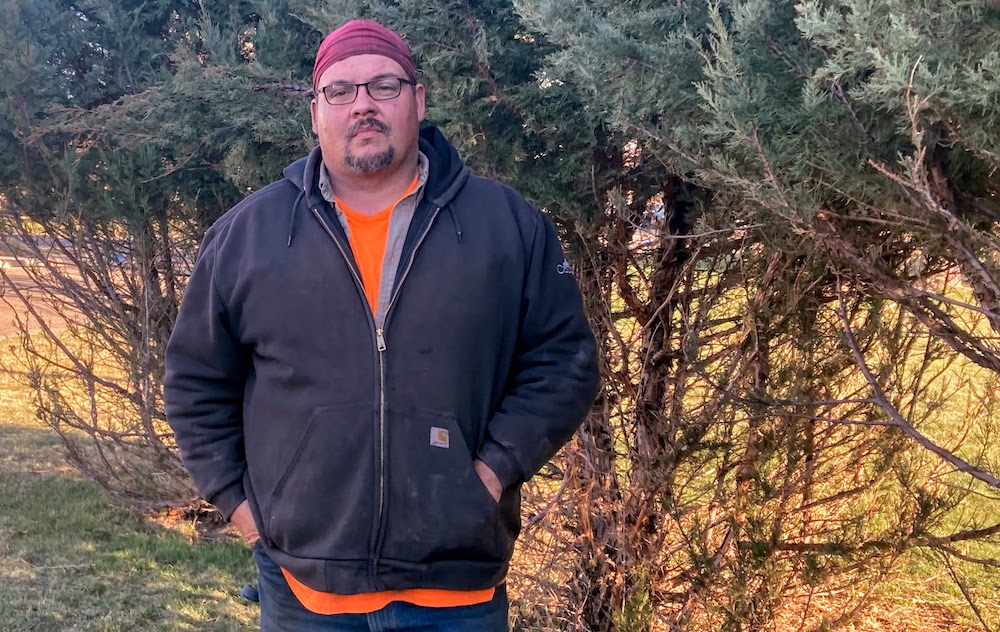 Northern Cheyenne tribal member Jason Small, who works as a boilermaker at the Colstrip plant, stands outside the Whiskey Gulch Saloon in Colstrip after his 10-hour shift. (Photo: Kelsey Turner)Under the federal Coal Ash Rule adopted in 2015, the Environmental Protection Agency requires plant owners to submit written closure plans detailing how their coal ash will be safely stored. Over 700 coal ash units in 43 states and Puerto Rico are regulated under this law. Almost all of these units are polluting groundwater with unsafe levels of toxins, according to an analysis of company documents performed by the nonprofit groups Earthjustice and Environmental Integrity Project.
Northern Cheyenne tribal member Jason Small, who works as a boilermaker at the Colstrip plant, stands outside the Whiskey Gulch Saloon in Colstrip after his 10-hour shift. (Photo: Kelsey Turner)Under the federal Coal Ash Rule adopted in 2015, the Environmental Protection Agency requires plant owners to submit written closure plans detailing how their coal ash will be safely stored. Over 700 coal ash units in 43 states and Puerto Rico are regulated under this law. Almost all of these units are polluting groundwater with unsafe levels of toxins, according to an analysis of company documents performed by the nonprofit groups Earthjustice and Environmental Integrity Project.
The safest closure option is generally to remove coal ash from unlined ponds where it is stored and place it in lined landfills. But many companies are proposing instead to cap their unlined ponds in place to prevent rainwater infiltration. Environmentalists argue this “cap-in-place” strategy does not do enough to prevent contamination, as it leaves ash in contact with the earth and often with groundwater.
Colstrip Steam Electric, the second-largest coal-fired plant west of the Mississippi, has an enormous coal ash pond complex covering more than 800 acres. Colstrip’s coal ash is disposed of by mixing it with water and storing it in ponds at three areas near the plant.
One of these areas involves nine ponds storing waste from the plant’s first two units. These Units 1 and 2 ponds hold enough ash to fill over 2,000 Olympic-size swimming pools. They have been leaking sulfates, boron, selenium and other toxic heavy metals into the local aquifer for decades, releasing 43,000 gallons of contaminated water per day, according to the state’s Department of Environmental Quality (DEQ) estimates.
The consequences of leaving coal ash in the groundwater here could be deadly, said Anne Hedges, director of policy and legislative affairs at the Montana Environmental Information Center. “There are dozens of contaminants. They cause cancer, they cause neurological disorders, they cause cardiovascular disease. These are not things you want to mess around with.”
Though the plant’s coal ash must be cleaned up and the ponds closed in accordance with the federal Coal Ash Rule, how the cleanup ends up happening remains to be seen.
If done thoroughly, coal ash cleanup could provide Northern Cheyenne tribal members with much-needed jobs while repairing environmental damages. But if not properly disposed of, the ash could contaminate an ancestral waterway and the drinking water of reservation residents.
The dangers of coal ash
In the town of Colstrip, residents don’t drink groundwater, instead getting their water piped in from the Yellowstone River. But on the Northern Cheyenne reservation, which lies about 14 miles from Colstrip Steam Electric’s ash ponds, nearly everyone drinks groundwater from tribal-owned wells.
If ash continues leaking into the aquifer, some tribal citizens fear it could flow toward the reservation. The Montana DEQ, the state regulatory agency responsible for ensuring that the Colstrip plant’s groundwater contamination is addressed, said this is a “very unlikely” outcome. Most contamination so far has been contained close to the pond sites with a system that captures polluted water, said DEQ’s Colstrip Environmental Project Officer Sarah Seitz.
But if the technology breaks down or is not properly maintained, contamination could spread further. This issue is not new for plant operator Talen Montana, a subsidiary of Allentown, Penn.-based Talen Energy. In 2019, Talen Energy agreed to pay a $1 million fine for coal ash contamination from leaking ponds at its Brunner Island plant in York Haven, Pennsylvania.
Small said community members are concerned about coal ash, “and rightfully so.” It’s especially worrying for ranchers, who fear polluted groundwater could make their animals sick. “I have cattle and stuff, too,” Small said. “I would say nobody wants the contaminated groundwater.”
Northern Cheyenne Tribal Administrator William Walksalong fears coal ash’s many unknown consequences. He worries coal ash could flow into the nearby Armells Creek, an ancestral waterway that supports more than 15 agricultural businesses downstream from the Units 1 and 2 ash ponds, according to the local conservation group Northern Plains Resource Council. Colstrip currently has a pump-back system in place to prevent ash from reaching the creek, but Walksalong continues to fear the pollution that could occur if this system one day fails.
“The long-term environmental impacts are what concerns me,” Walksalong said. “That’s our land. That’s our ancestral homeland.”
Toxic legacies and broken promises
The herds of deer that wander Colstrip’s streets seem to have grown used to the plant’s steady presence in the community. Steam billowing from its two remaining units is simply a part of life, blending into puffy clouds drifting through Big Sky Country.
But local tribal members and environmentalists see the plant and the coal ash as a serious threat to wildlife and natural resources, and they are fighting to make sure the coal ash is removed and the area fully remediated.
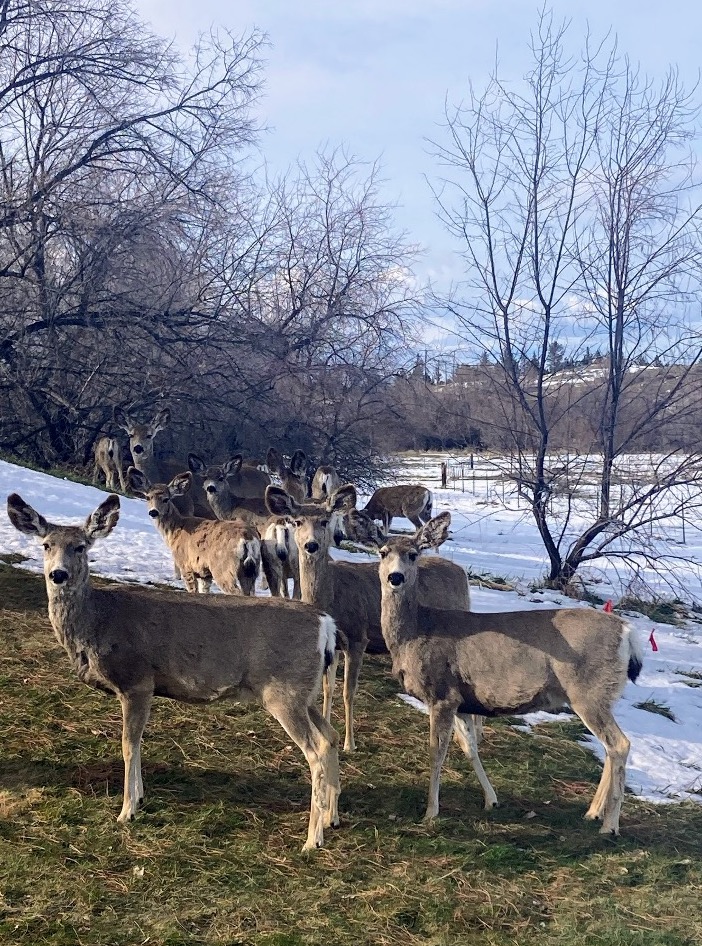 A herd of mule deer walk through Colstrip’s residential neighborhood. (Photo: Kelsey Turner)Talen Montana, as the plant’s operator, is responsible for developing “remedy alternatives” for coal ash. The Montana DEQ selects a remedy and directs Talen to design a plan to carry it out. DEQ has already selected remedies for all three pond areas, allowing Talen to leave the ash in place for some ponds and requiring full removal for others. Local environmental groups, however, are concerned about Talen’s plans for the ponds at Units 1 and 2. Some ash in these ponds sits in direct contact with the groundwater, making it easy for contamination to spread.
A herd of mule deer walk through Colstrip’s residential neighborhood. (Photo: Kelsey Turner)Talen Montana, as the plant’s operator, is responsible for developing “remedy alternatives” for coal ash. The Montana DEQ selects a remedy and directs Talen to design a plan to carry it out. DEQ has already selected remedies for all three pond areas, allowing Talen to leave the ash in place for some ponds and requiring full removal for others. Local environmental groups, however, are concerned about Talen’s plans for the ponds at Units 1 and 2. Some ash in these ponds sits in direct contact with the groundwater, making it easy for contamination to spread.
Northern Cheyenne tribal member Alaina Buffalo Spirit drinks groundwater from a private well near her home on the reservation. She fears that contaminated groundwater from Colstrip could eventually flow toward Northern Cheyenne lands and pollute the drinking water of future generations.
A member of the Northern Plains Resource Council, Buffalo Spirit advocates for a “high and dry” cleanup plan for the Units 1 and 2 ponds. This means coal ash would be fully dug up and moved to a new, lined landfill on Talen property.
In 2020, DEQ selected a remedy directing Talen to do just that. Talen, however, disputed the agency’s decision, claiming DEQ had chosen the most expensive remedy despite other proposals meeting environmental requirements at lower cost. The company prefers to remove only the ash closest to the water table and relocate it to different parts of the ponds, while also installing technology that dries the ash and treats contaminated water, among other remediation actions.
Ultimately, DEQ reached a settlement with Talen last October. Though the settlement requires Talen to continue planning for full removal, it also gives the company two years to propose another, potentially less rigorous, plan for handling coal ash.
This settlement leaves the high-and-dry plan in “serious jeopardy,” Hedges of the Montana Environmental Information Center said. “The state left the door open for Talen to come back with a weaker cleanup plan.”
Adding to the uncertainty, Talen Energy filed for bankruptcy in May, citing $4.5 billion of debt, the Billings Gazette reported. This is alarming for environmentalists like Hedges who think the financial assurance Talen is required to pay DEQ for ash cleanup is not enough to cover those costs should Talen disappear.
DEQ currently holds over $306 million in bonds for financial assurance, and does not foresee Talen’s current financial situation affecting its cleanup responsibilities, according to DEQ officials. Talen Energy did not respond to requests for comment.
The Northern Cheyenne tribe supports full removal of coal ash not only for environmental and health reasons, but also for the jobs it might provide – jobs that will be even more needed if the plant closes. The reservation has an unemployment rate of 13.3 percent, according to the U.S. Census Bureau. As of 2019, the tribe calculated that if the Colstrip facility closes, about one in five Northern Cheyenne tribal members’ jobs would be lost.
Republican State Senator Duane Ankney worked for many years as superintendent at a mine near Colstrip that provides coal for the plant. He knew that each Native worker he oversaw was often supporting multiple families back on the Northern Cheyenne reservation or the adjacent Crow reservation.
“When a young Crow or Northern Cheyenne man works overtime, he’s probably buying Pampers for three families,” Ankney said. “It’s not driven by his wanting a brand new fancy pickup. It’s driven by his family’s needs.”
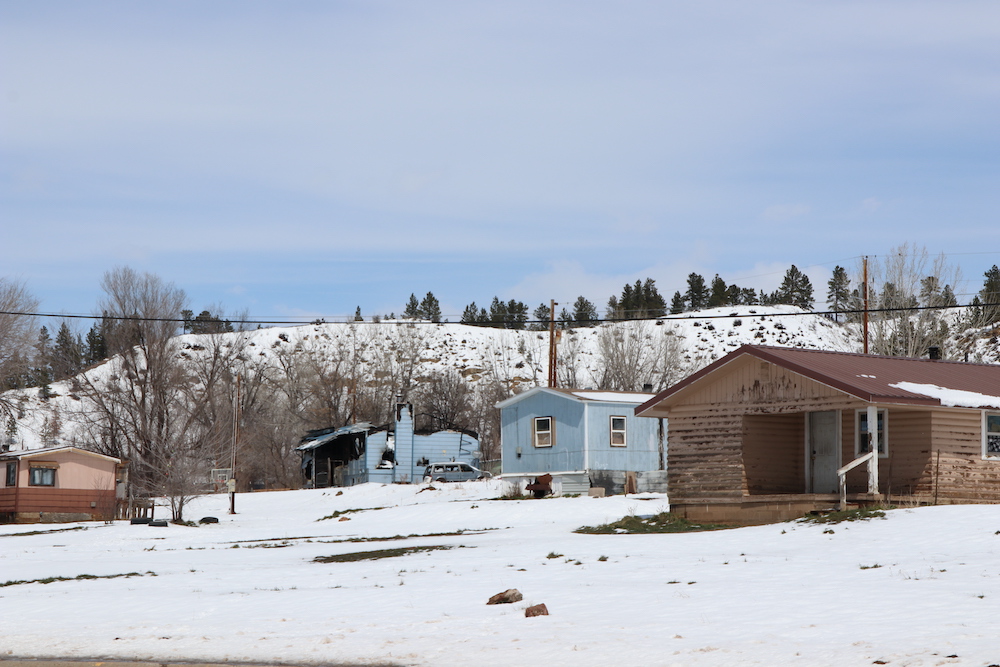
An analysis by the Northern Plains Resource Council found that if Talen were required to carry out full coal ash removal at the Units 1 and 2 ponds, along with groundwater treatment and aggressive remediation at some of the plant’s other pond areas, an average of 400 jobs per year would be created in the first 10 years. These jobs could partially offset those lost if the plant closes, while also protecting the environment, a scenario Northern Plains calls a “true win-win.”
Small, however, thinks coal-ash cleanup employment impact will be “negligible” for the tribe. The local coal industry employs about 100 tribal members, including at the Colstrip plant, the nearby Rosebud Mine and the much smaller Colstrip Energy LP plant about six miles north of town, according to the Southeastern Montana Development Corporation.
“The older generation of Cheyennes, there were quite a few that worked the mines and the plants,” Small said. “They’ve died off and there haven’t been that many who necessarily go into that line of work again. And I don’t think ash cleanup is going to drag them back.”
While Walksalong supports job creation, he is also skeptical these jobs will provide substantial economic opportunity for tribal members. After all, this was the same promise made to them back when the Colstrip plant first opened in 1975. “They promised us jobs, spin-off businesses, things like that,” Walksalong said. “That really hasn’t happened.”
Nearly 30 percent of people on the Northern Cheyenne reservation live below the poverty level, according to U.S. Census data. Some live in battered trailers and houses cramped with several generations of family members. Others live in spacious single-family homes. “Those are the people that have worked at Colstrip,” said Rae Peppers, general manager for the Northern Cheyenne Utilities Commission.
As a result of a 1980 agreement between the Northern Cheyenne tribe and the plant’s then-owner Montana Power Company, tribal members have hiring preference at Colstrip. Despite the agreement, unemployment rates on the reservation tripled between 1970 and 1990, while the poverty rate increased to almost five times the rate of other Rosebud County residents, according to the Sierra Club’s analysis of federal data.
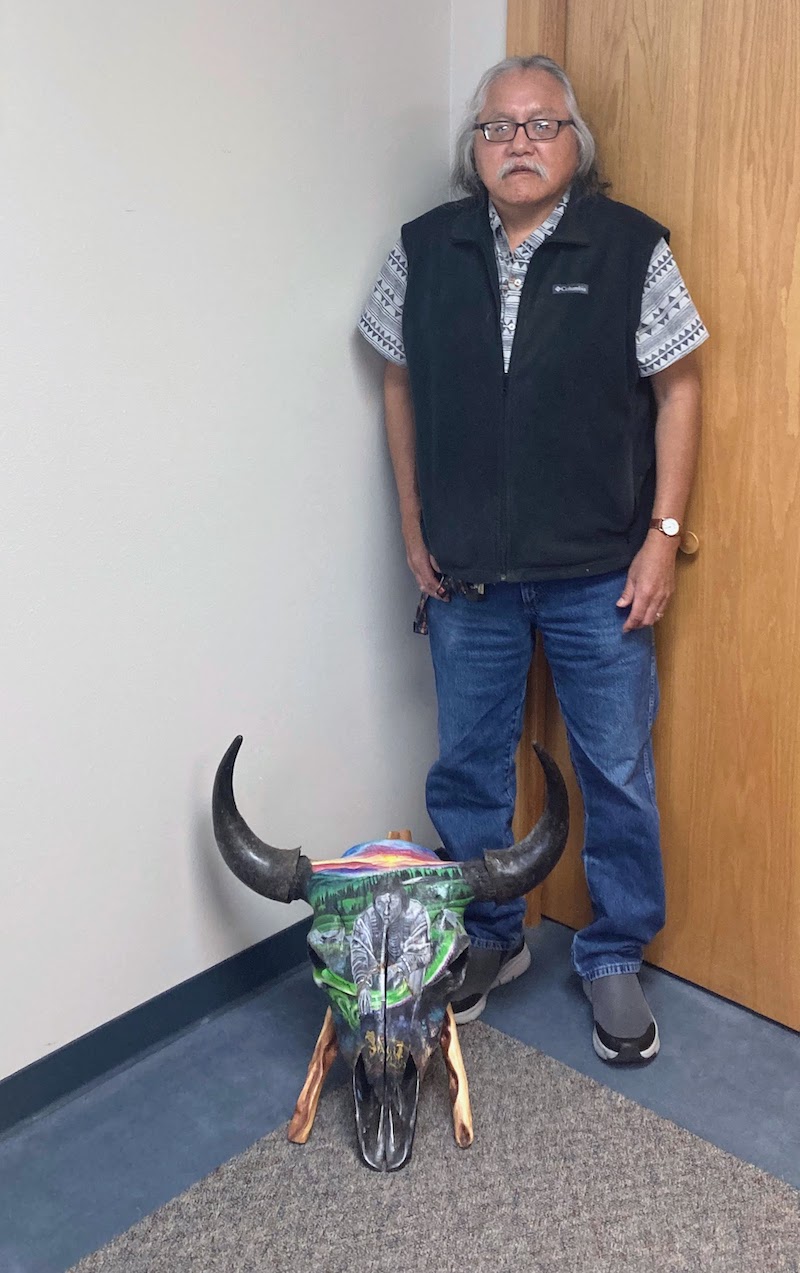 Northern Cheyenne Tribal Administrator William Walksalong stands beside a painted buffalo skull, a piece of artwork belonging to his nephew that Walksalong keeps in his office. The painting depicts a man smoking a ceremonial pipe. (Photo: Kelsey Turner)While coal ash removal would create jobs that could theoretically decrease unemployment among tribal members, there are systemic reasons why Colstrip has historically failed to bring prosperity to the reservation, Walksalong said. For him, job creation through coal ash could be just another empty promise made by the coal industry. “Right now, I think there’s a movement amongst our people to not get taken by these false promises of jobs and economic stimulation in this area,” he said.
Northern Cheyenne Tribal Administrator William Walksalong stands beside a painted buffalo skull, a piece of artwork belonging to his nephew that Walksalong keeps in his office. The painting depicts a man smoking a ceremonial pipe. (Photo: Kelsey Turner)While coal ash removal would create jobs that could theoretically decrease unemployment among tribal members, there are systemic reasons why Colstrip has historically failed to bring prosperity to the reservation, Walksalong said. For him, job creation through coal ash could be just another empty promise made by the coal industry. “Right now, I think there’s a movement amongst our people to not get taken by these false promises of jobs and economic stimulation in this area,” he said.
Tribal members cite a variety of reasons why some Native people choose not to work at Colstrip. One reason is drug testing. Substance abuse is widespread on the reservation, and some people do not apply for work because they know they could not pass a drug test, Peppers said.
Another reason is that tribal members do not want to face the workplace discrimination they say they’ve experienced at the plant and mine. “I think they pushed a lot of our people out because of that institutionalized racism in their company down there,” Walksalong said.
Peppers, an enrolled member of the nearby Crow tribe who has lived on the Northern Cheyenne reservation for 40 years, worked as a secretary at Colstrip when she was younger. While there, she felt her boss treated her poorly. “I just walked away from the job and quit,” she said. “And that’s what a lot of people here tend to do.”
Colstrip Mayor John Williams, a non-Native man, noted other benefits in addition to jobs. As part of the 1980 agreement with the tribe, Colstrip Power Plant offers annual full-ride college scholarships to two tribal members that plan to study a subject related to energy development. And schools in Lame Deer – where the Northern Cheyenne tribe is headquartered – have received funding from Montana’s Coal Board, which provides grants to communities, school districts and tribal governments for needs related to coal development.
While Peppers agrees coal ash cleanup would create employment for those on the reservation, she also thinks Native people in the area should not rely on Colstrip for economic opportunity. If the plant shuts down, she’s confident that tribal members would find new ways to support themselves. “Just look at our history of everything that has happened to Native [people],” she said. “We pick ourselves back up and continue.”
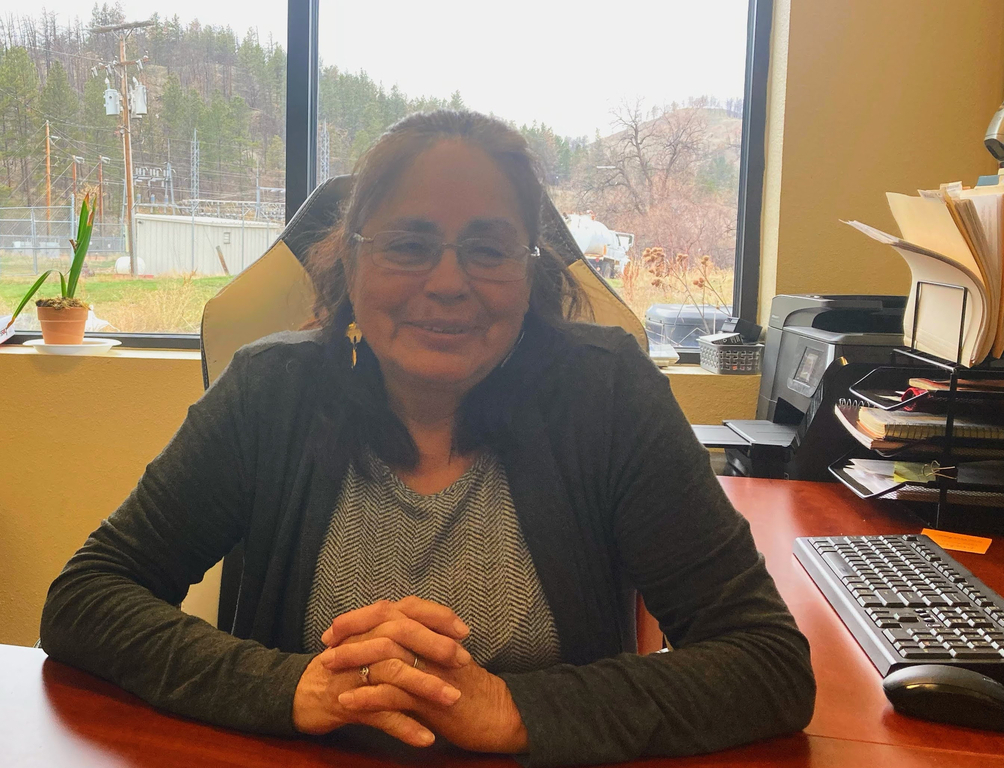
‘Blood flow of the living earth’
Tom Mexicancheyenne was in his early 60s when he began receiving messages from what he calls “the sacred ones.” After going through a rough few decades of relationship troubles and healing from drug and alcohol use, Mexicancheyenne suddenly felt a profound urge to be in nature.
Every day, he would go out to his backyard and stand among the trees alongside a creek. There, he would talk to the spirits. “The trees speak to one another, the plants, the insects,” he said.
He believes that generations ago, Cheyenne people were more in touch with their connection to the earth. “But because of what we went through – assimilation, alcohol back then, and eventually now it’s drugs, too – we’ve lost those teachings, many of us. But I know we can get them back.”
To do so, Mexicancheyenne says he continues speaking for the water that cannot speak for itself – and that is being put at risk by human activities.
“We’re disturbing the natural blood flow of water,” he said. “The blood flow of the living earth. If we disturb that, of course it’s going to do something. It’s going to cause contamination.”
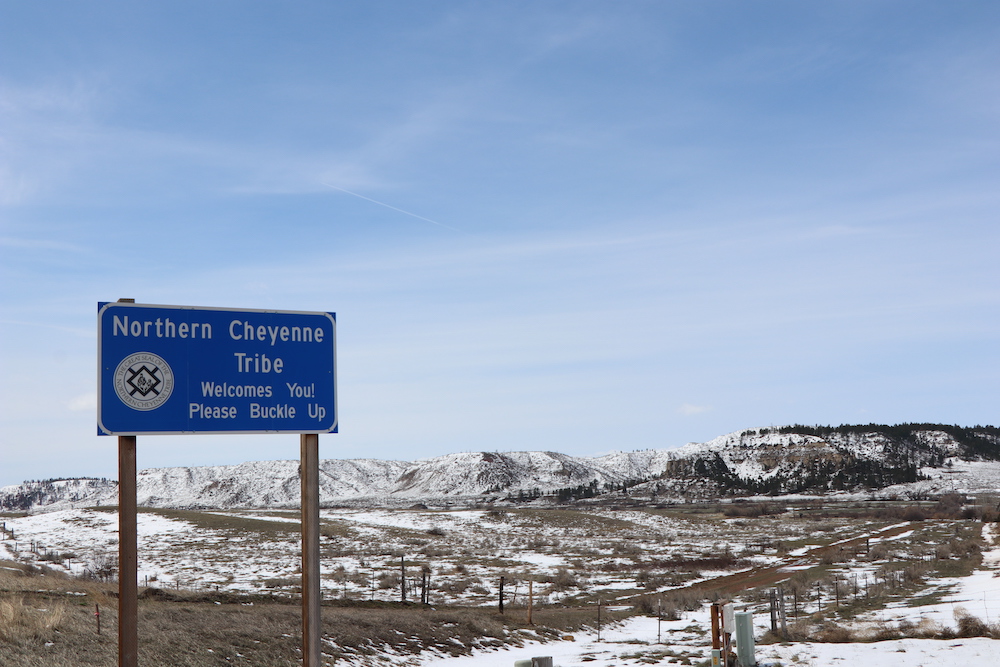
They put chemicals into the ground and hit underground springs while drilling, he said. “As a Cheyenne man – and there are other tribes, many tribes that believe this, too – you never do anything to the earth. You never destroy it. You’re not even supposed to dig it up. That was the teachings that we learned.”
He worries Talen’s preferred plan for dealing with coal ash would similarly harm the earth. Now an at-large board member of the Northern Plains Resource Council, Mexicancheyenne advocates for full removal of Colstrip’s coal ash before the area’s groundwater situation gets even worse. “If we don’t stop what we’re doing, things are going to change,” he said.
Walksalong feels Colstrip has “completely ignored” the Northern Cheyenne’s opinions on coal ash remediation. “I even asked to go down there and tour those coal ash ponds. They never did invite me, never did follow up,” he said.
After working to protect Cheyenne homelands from environmental harms for the last 30 years, Walksalong is ready to move past coal. “I want to be part of that movement of people that put an end to this coal giant that took no consideration of the Northern Cheyenne people, our environment and the effect on our health.”
He remembers American developers arguing with him when the tribe opposed coalbed methane development in the early 2000s. “Don’t you Northern Cheyennes understand? You could get rich!” he recalls them saying.
But Walksalong holds a belief that he thinks coal developers often struggle to understand: Money isn’t everything. As coal booms and busts, developers and energy companies come and go from the area. Meanwhile, the tribe is left to protect their ancestral land from coal’s long-term consequences, like coal ash pollution.
“Those of us that live here have deep roots,” Walksalong said. “We buried our people on these lands here, held ceremony here, built our homes here, farmed here, ranched here. Our souls are here on this land.”
This story was produced as part of the Chicago Investigative Program in the graduate program at the Medill School of Journalism, Media, Integrated Marketing Communications at Northwestern University.
More Stories Like This
Klamath Indigenous Land Trust Purchases 10,000 Acres as Salmon ReturnTrump signs law that revokes some limits on drilling in Alaska’s National Petroleum Reserve
Southern Sierra Miwuk Nation Gets 900-Acres ofLand Back
Chilkat Indian Village Tells New Palmer Mine Owners They Are “Not Welcome” in Chilkat Valley
Tribes, Coastal Group Ask Army Corps to Revoke Permit for Texas Export Terminal
Help us defend tribal sovereignty.
At Native News Online, our mission is rooted in telling the stories that strengthen sovereignty and uplift Indigenous voices — not just at year’s end, but every single day.
Because of your generosity last year, we were able to keep our reporters on the ground in tribal communities, at national gatherings and in the halls of Congress — covering the issues that matter most to Indian Country: sovereignty, culture, education, health and economic opportunity.
That support sustained us through a tough year in 2025. Now, as we look to the year ahead, we need your help right now to ensure warrior journalism remains strong — reporting that defends tribal sovereignty, amplifies Native truth, and holds power accountable.
 The stakes couldn't be higher. Your support keeps Native voices heard, Native stories told and Native sovereignty defended.
The stakes couldn't be higher. Your support keeps Native voices heard, Native stories told and Native sovereignty defended.
Stand with Warrior Journalism today.
Levi Rickert (Potawatomi), Editor & Publisher
